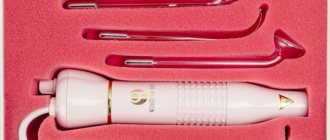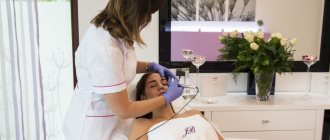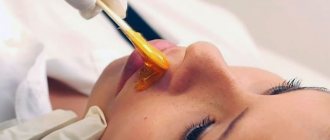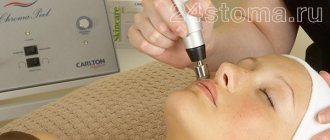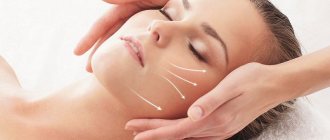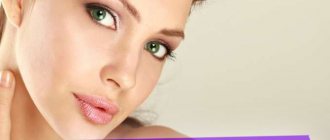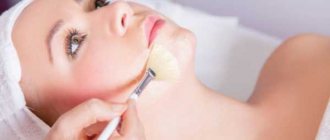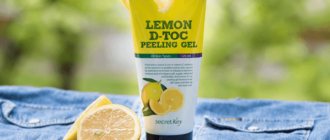Massage lines: essence and meaning
Massage lines are collagen fibers along which lymph flows.
In cosmetology and dermatology, these specific lines are called “Langer lines”. The name goes back to the work of an old school German anatomist. In 1861, he described their properties and topography in his work “On the anatomy and physiology of the skin. On the splitting of the skin." Langer systematized and presented to the scientific world data on all kinds of collagen bundles that lie deep in the skin and impart elasticity to the area in which they lie.
There is another important property of such accumulations: lymph moves along these conventional lines.
The location and orientation of the fibers in Langer's lines are constant: they are oriented perpendicular to the muscle fibers. The greatest concentration of lines is in the areas of natural folds of the skin. Their longitudinal strength is three times greater than the transverse strength.
Collagen is the main component of connective tissue. It makes up 25% to 45% of the whole body's proteins. Today, 28 types of collagen are known; more than 40 genes are involved in its coding.
Karl Langer's hypothesis was confirmed by the research of the Irish physiologist from Dublin, Professor Ashlin Ni Anned.
To obtain the effect of a cosmetic massage, the importance of such collagen lines is difficult to overestimate: movements performed along them significantly increase the effectiveness of massage techniques. On the contrary, performing a massage across these accumulations leads to sagging of the skin, making it less elastic. By carrying out the procedure only in the morning and evening, you can perform erroneous harmful techniques 730 times a year.
After 35 years, collagen begins to lose its properties, and the elasticity of the skin and connective tissue rapidly decreases. Therefore, massage is necessary.
Facial skin lines
Skin lines have been the subject of study and debate among anatomists and surgeons for many years. None of the available approaches to skin incision lines are considered the gold standard of surgery. Moreover, when discussing such a concept as skin lines, misunderstandings often arise. Erroneous interpretations of this term are often found in the literature.
A variety of methods have been used to study skin lines, from simple palpation to the creation of three-dimensional interactive models. There are many different points of view on the reasons for the formation and varieties of these lines.
INTRODUCTION
For many years, skin lines have been studied by surgeons and anatomists in order to develop a technique for dissecting the skin that will be as effective as possible and, at the same time, will not disturb the aesthetics of the skin (that is, after an operation using such a technique for dissecting tissue, the scar will look as aesthetically pleasing as possible ).
Over the course of 100 years, doctors have described 36 different skin lines (hence, 36 approaches to this problem have been developed in one century). None of these approaches is considered a reference, but the skin relaxation lines (SRLs) described by Borges are most often used by physicians. A variety of techniques have been used to study these lines, from studies of cadaveric tissue to three-dimensional models. Despite the fact that these lines on the face are located in a certain order, in some areas of the face the lines intersect each other at right angles, and do not run parallel - this causes certain difficulties.
TECHNIQUES FOR STUDYING SKIN LINES
Karl Langer (1819-1887), professor of anatomy at the Vienna Academy of Medicine and Surgery, carried out a large number of studies on the bodies of recently deceased people, piercing the skin with a circular awl (Fig. 1). The holes resulting from the puncture were elliptical, not circular - this was explained by the peculiarities of the structure and movement of the muscles. This explanation has appeared in the literature extremely often.
Langer was not the only scientist who noted this property of the skin. The first was Guillaume Dupuytren (1834), famous for his description of flexion contracture of the fingers. He described this phenomenon in detail while examining the corpse of a suicide who inflicted multiple penetrating wounds to the chest using a sharp, rounded instrument. His wounds were also elliptical rather than circular.
A year later, Langer conducted a further series of experiments on the limbs, making three-centimeter circular incisions in the flexor muscles of the arm, bent at the elbow, and noted that the skin initially relaxed longitudinally, and after the circular incision - transversely.
Cox, working on his dissertation in Great Britain in 1941, again began studying the lines
Langer, using a pointed tool resembling a pile. The study was again conducted on cadavers, but this time Cox worked only on the bodies of people of average build who had a low to average percentage of subcutaneous fat (Fig. 2).
In 1947, Rubin, working at Kings County Hospital in Brooklyn, used a police fingerprinting device (a dye-coated material was applied to the skin and then an imprint was made on paper) to determine the patterns of stress lines in the skin (Figure 3). .
Kraissl, working in New York, used photographs and drawings. He photographed the face of an elderly man after contracting one of his facial muscles. At the same time, the severity of wrinkles increased. Krysl sketched the result, gradually creating a composite sketch of all the facial lines. (Fig.4).
Straith presented a study in Detroit in 1961 on subcutaneous sutures. During the study, Strafe noted the location of the skin tension lines, but did not clearly explain the methods used to create the pattern of their location (Fig. 5).
Repeating Langer's second series of experiments, Bulacio introduced a new facial line pattern in 1961 and 1974 in Argentina. He sketched the stretch lines of the skin by examining holes in the skin of corpses (Fig. 6).
Finally, in 1984, Borges described a simple method for determining skin relaxation lines. Borges suggested lightly pinching and pulling the skin in a certain area, and then observing the furrows that form. He believed that, using earlier techniques, one could be mistaken by mistaking certain lines on the skin, resulting from muscle contraction and joint movement in a certain direction and at certain angles, as true lines of skin relaxation (SRL) (Fig. 7).
Sarifakioglu described new skin lines in 2004, calling them “sleep lines.” The location of these lines depends on the person's body position during sleep and the type of pillow, however, these lines should not be confused with skin incision lines, since they run perpendicular to the skin relaxation lines and Langer's lines.
Skin lines were considered a static feature of the face, but Bush conducted a study on 175 incision scars on the face and neck. He found significant differences in the degree of rotation of Langer's lines with different facial expressions by comparing the long axes of the incisions relative to vertical lines pre-marked before surgery. Moreover, dynamic skin stress lines were identified using 3D models based on kinematic skin analysis automated by computer systems. This method is considered the least invasive, can be used repeatedly, and is considered the most accurate.
Results and discussion
In almost all books on plastic surgery one can find various debates regarding Langer's lines. Moreover, terms such as Langer's lines and skin relaxation lines (SRLs) may be mistakenly used interchangeably.
A study carried out at the Royal College of Surgeons of Glasgow found that Langer's lines were originally redrawn incorrectly in various teaching aids and that his work was poorly translated from German into English. Another dilemma arose from the fact that Langer did not conduct his research with the goal of creating a specific technique for dissecting tissue. Langer's lines cannot be called "relaxation lines" because in his studies he used cadaver tissue,
those in a state of rigor mortis - there can be no talk of any relaxation. Examining these lines, you will notice that in most areas they are located according to the same principles, but in some areas they intersect at an angle of 90 degrees.
If we take Borges' lines as a basis, we can derive "anti-LRK"
Anti-LRK zones.
Langer's lines: Scalp, forehead, lateral to eyelids, glabella, middle of cheeks
Cox's lines : Scalp, forehead and chin
Ruby Lines: Glabella, middle and lower cheeks
Kreisl lines : Nose, skin around eyes, chin
Strafe's lines: Columella, glabella and mentolabial folds
Bulazio Lines: Forehead, lower skin around eyes, upper and lower lips, upper neck
Sleep Lines: Forehead, skin around the eyes, nasolabial fold and glabella
Over the entire period of research, a huge number of methods have been used to study these lines. The simplest method is the Borges method - a simple pinch of the skin. It is the lines of Borges (LLC) that surgeons often follow when performing operations. Although there is often confusion with Langer's lines, they are also often used by plastic surgeons.
The appearance of these lines is explained by the activity of the subcutaneous muscles, the fibers of which run perpendicular to these lines. Another explanation was obtained by studying the skin using an electron microscope. Using this device, scientists discovered that skin tension lines are formed due to the interaction of elastin and collagen fibers. In turn, sleep lines are formed due to a certain position of the head during sleep - the structure of the skin and muscle activity do not affect the formation of sleep lines.
Ali Al Hamdi
Direction and location of Langer lines
The most significant area for women that requires cosmetic care is the face. Many people understand intuitively how to massage it, listening to their tactile sensations. To such knowledge it is worth adding time-tested classic lines. They are subject to a single principle: the fibers are directed from bottom to top and from the center to the periphery.
Face lines:
- from the center of the chin - to the lower edge of the earlobes;
- from the depression above the upper lip - to the middle of the outer ear;
- from the wings of the nose at the beginning of the nasolabial fold - to the upper tips of the ears.
- from the middle of the bridge of the nose - to the temples, along the eye socket;
- from the tip of the nose - up the bridge of the nose
- from the outer corner of the lower eyelid - to the inner corner;
- from the inner corner of the upper eyelid to the outer.
Lines on the forehead:
- from the bridge of the nose - along the brow ridges to the temples;
- from the bridge of the nose, along the center line of the forehead - to the line where hair begins to grow.
Lines on the neck and décolleté:
- from the center of the chest - top in an arc, along the collarbone area;
- along the front surface of the neck - up to the chin;
- along the side surfaces of the neck - to the ear area and to the base of the skull.
Withering and loss of skin elasticity in these three zones is a fairly common phenomenon. This is due to age-related changes in the body and many years of active facial expressions. Women with dry skin are especially susceptible to this state of affairs.
Langer lines are easy to find empirically. You will need a mirror. On a small area of the face, you need to slightly squeeze the skin, first along and then across. The lines are located where the fold is formed.
Procedure for facial massage
Among the various types of massage, the most popular is classic cosmetic massage. Its tasks are reduced to maintaining a healthy appearance and skin tone. As a rule, it is carried out twice: at the beginning of the day and at night. A combination of massage movements and special care products works ideally. In the morning, various tonic and protective compositions are good, and before bed - nutritional mixtures.
Massage along Langer's lines gives the following results:
- skin tightening and stabilization of the resulting facial contour;
- normalization of lymph outflow;
- optimization of nutrient supply and innervation of the skin;
- increasing skin firmness and elasticity;
- disappearance of facial and age-related folds;
- stopping the appearance of new wrinkles.
Unlike professional therapeutic and plastic types of massage, classical techniques can be performed by any woman.
If the massage is carried out without applying creams, special oils can be used to enhance the effect. Walnut and apricot oils are good for all skin types. Avocado or wheat germ oil is suitable for dry skin. For normal use olive oil. For oily people - oil based on St. John's wort or jojoba.
Gymnastics for the face of Anastasia Burdyug: a set of exercises with photos and videos
Discussion: 3 comments
- Alla:
05/31/2019 at 12:16 pmI think if a woman is over 40, then such a massage is simply a must. I do it systematically and the skin on my face has become much healthier and more elastic, I like the way I look now.
Answer
- Natalia:
05/25/2019 at 11:52 am
Over the last couple of months I started giving myself this massage, I am delighted, I see that the condition of my skin has improved much.
Answer
- Elena:
05/20/2019 at 6:07 pm
I repeatedly did this massage for myself, but with a specialist, where I really got the desired effect, after all, the person has the correct massage technique, I would not have been able to do that.
Answer
Self-massage technique for the face from Elena Zemskova
Elena Zemskova is the founder and director of the Moscow school “Chiromassage IQ”. Her methods are based on the latest advances in the field of anatomy, neurology and psychology. The school has representative offices in Russia, Israel, Latvia, Lithuania, and Estonia.
According to Elena’s method, massage is carried out in several stages:
- Soft stroking, leading to activation of the nervous system, transmitting excitement to the vascular and muscle tissue of the massaged area.
- Kneading the deeper layers with your fingertips to influence the lymphatic and blood vessels.
- Final passes with the phalanges of the fingers to improve the functioning of the muscular system.
Skin activation is carried out exclusively through massage lines. The movements are performed rhythmically, without strong pressure, avoiding pain. After working through the zone, the movement is fixed at the end of the line for 1-2 seconds.
The school offers three types of facial massage. The first is a short universal express lifting that allows you to quickly restore tone. The second is differentiated corrective massage. The third is decongestant lymphatic self-massage.
How to properly apply cream to face and neck
The cream is applied to clean, warm and slightly damp skin. Clean the massaged area with micellar water, hydrophilic oil, mousses and lotions, and two-phase products. Vitamin tonic is suitable for rinsing. Before performing the massage, part of the nourishing care composition is rubbed into the fingertips.
The amount of product applied is selected individually. An insufficient dose will not be effective, an excessive dose will clog the skin pores and create a specific film. Special delicate creams are used to care for the eye area; the décolleté area can be treated with regular body cream. In this area, massage is done by lightly tapping with the ring fingers.
After applying the cream, you need to let the product absorb. Usually 15-20 minutes are enough for this.
Can facial massage be harmful?
Contraindications for the procedure are:
- allergic or infectious skin diseases: herpes, dermatitis, eczema;
- inflammatory processes in the throat, nasopharynx, ear;
- high fragility of the walls of peripheral vessels;
- malignant neoplasms in the massage area;
- disruption of lymph flow and inflammation of the lymph nodes;
- decreased intracranial pressure;
- skin fatigue after microdermabrasion or deep peeling.
Skin care for the face, décolleté and neck for women is a pressing task that requires a serious and thoughtful approach. When performing a daily cosmetic massage along Langer's lines, remember: gradualism, consistency, awareness. In this case, the skin will remain fresh and tightened for many years.
Sources
- ↑Langer S.R. “Zur Anatomie und Physiologie der Haut. Über die Spaltbarkeit der Cutis", 1861.
- ↑The influence of the direction of Langer’s lines on the elasticity (extensibility) of the skin of the human body / Chernyshov K.A. // Selected issues of forensic medical examination. - Khabarovsk, 2008. - No. 9. — P. 60-62.
- ↑On the tensile strength of skin in forensic medicine / Grebennikova N.V. // Forensic-medical examination. - 1974. - No. 1. — pp. 13-14.
- ↑Some features of changes in the size of skin preparations after exposure to fixing solutions / Chernyshev K.A. // Selected issues of forensic medical examination. - Khabarovsk, 2007. - No. 82. — P. 70-72.
